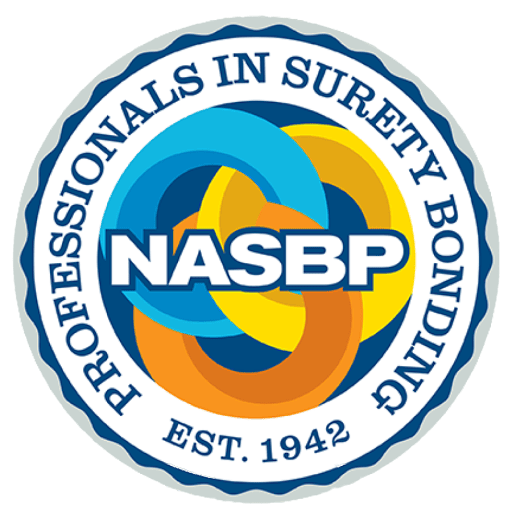March 2005

This web seminar is free and open to NASBP members. To register for this valuable and informative presentation,
Increasing Your Bottom Line There are many opinions as to what it means to increase an agency’s bottom-line. Many agencies like to compare their pre-tax profits as a percentage of revenues to that of other agencies. However, pre-tax profits in a privately owned agency are normally only an indication of how much the agency owner(s) choose to retain. The real reward of ownership is better illustrated by adding executive and production payroll to pre-tax profit and dividing the sum by revenues to get a percentage. This is truly a measurement of the short-term rewards provided by the agency to those producing results – the producers and owners. This calculation is called the Reward Ratio. The average agency has a Reward Ratio of 37 to 39 percent. Over the years it has been proven that those agencies with the highest Reward Ratio also have the most value. This is based on a study MarshBerry conducted that analyzed the performance of agencies valued over the last couple of years. To offer an additional perspective, consider that every agency (100%) sold by MarshBerry over the years for two-times revenues or higher, boasted a Reward Ratio of 50 percent or more. There simply is no question that this ratio correlates directly to value. In fact, if we could use only one ratio in an insurance agency to speculate on its value, it would be the Reward Ratio. The Reward Ratio is a much better way of measuring how well an agency is doing than comparing an agency’s pre-tax profit. But, what are those agencies with the highest Reward Ratio doing that others are not? They are able to manage and control expenses. To illustrate which expenses are most important, expenses will be divided into two major categories for this discussion: 1.) payroll expenses and 2.) non-compensation expenses. Non-compensation expenses include the categories of selling, operating and administrative expenses. Payroll expenses include the payroll categories of owner/producers, service personnel and agency support payroll. Typically, there is little difference in total payroll as a percentage of revenues between agencies, which is usually 55 to 57 percent of revenues. However, when looking at the individual payroll categories, the owner/producer payroll percentage is usually higher in agencies with a higher Reward Ratio and service personnel payroll, as a percentage of revenues, is measurably lower. Therefore, a major reason owner/producers in the better agencies receive more payroll is because of their ability to effectively manage the payroll of the service personnel. Many of you may conclude that the lower service personnel payroll percentage is due to paying service personnel less. This is not what we have seen over the years when consulting with agencies. Matter of fact, it is the exact opposite. Higher quality, more professional service personnel are paid more, on average, resulting in a higher level of service personnel productivity that results in an overall lower service personnel payroll percentage. It is the old adage; “You get what you pay for.” Moving on to the other expense category, non-compensation expenses. As mentioned earlier, this category includes selling, operating and administrative expenses. As one would expect, agencies with higher Reward Ratios are very good at controlling non-compensation expenses. The difference is generally attributed to operating expenses, which is no real surprise. But reviewing the expense items that make-up operating expenses, the difference is usually due to facilities (rent, utilities), equipment rental and maintenance and bad debts. Therefore, one of the most important expenses for agencies to monitor, manage and control is operating expenses and another is service personnel payroll, which we discussed earlier. These two expense categories are the most important, yet most difficult expenses to manage and control for an agency. Because of their importance, they are combined to form a ratio called servicing costs. To understand your performance and how it compares to other agencies, go the MarshBerry’s web site – www.MarshBerry.com – and click on “Financial” under On-Line Services. There you will find a Calculating Tool called “Assess Your Agency’s Performance.” This Calculating Tool provides benchmarks for the areas discussed in this article as well as other ratios that are important to the performance, and thus, the value of your agency. _____________________________ Marsh, Berry & Company, Inc., founded in 1981, is a management consulting firm for the financial services industry and the preeminent provider of consulting services for independent insurance agency owners and brokers. Services include agency valuations, perpetuation planning, compensation strategies, financial management, strategic planning and mergers and acquisitions. MarshBerry.com, an on-line agency management resource, can help NASBP members improve sales, boost employee performance and measure their value. For more information, or to subscribe to MarshBerry.com, please login to NASBP’s “Members and Affiliates Only” site or contact Susan DeCourcey at 202/464-1177 or sdecourcey@nasbp.org.
New Mexico’s on Verge of Requiring Subs to Obtain Bonds The New Mexico Legislature has passed legislation (S. 814) requiring subcontractors to provide performance and payment bonds for public works contracts in excess of $50,000. The bill now heads to Gov. Bill Richardson for his approval. The April issue of Pipeline will report on the final status of this bill and other bills from other states.
|
Get Important Surety Industry News & Info
Keep up with the latest industry news and NASBP programs, events, and activities by subscribing to NASBP Smartbrief.




